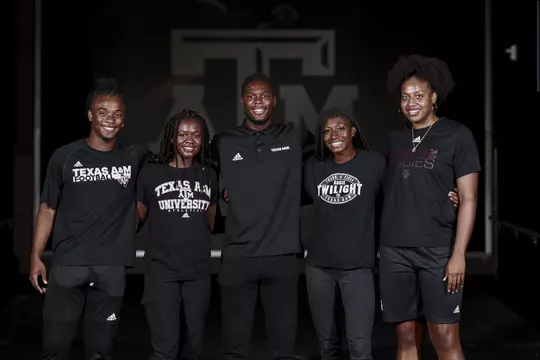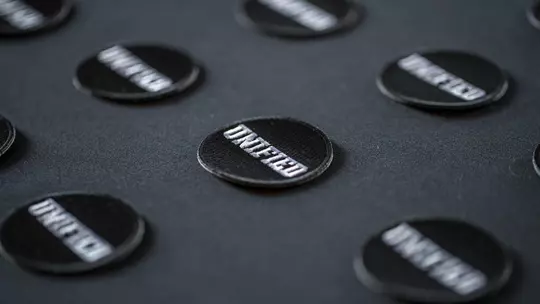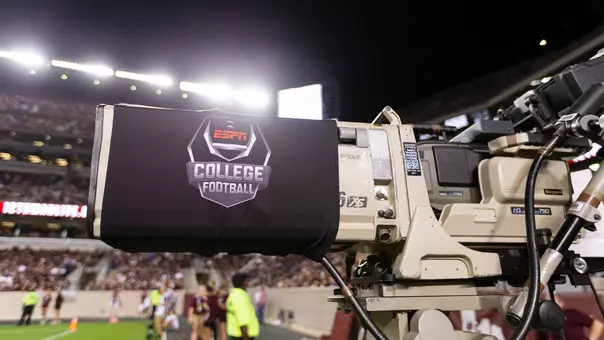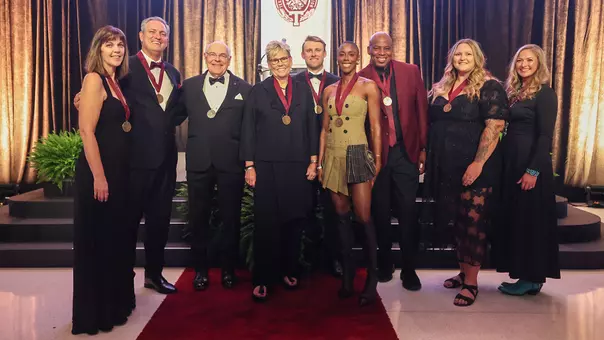Finding Oneness
Aug 25, 2021 | General
Aggie Commitment Charts a Bold New Course for Diversity and Inclusion
When future history students look back in their textbooks at the summer of 2020, it isn't hard to imagine which images will resonate. There might be a photo of George Floyd, or Breonna Taylor, or Ahmaud Arbery, or Jacob Blake or one of the countless others that fell victim to centuries of hardwired racial injustice, discrimination and hate. The pain of loss is immense. The pain of senseless loss is immeasurable.
That feeling of senseless loss overflowed across the country last summer, in people of all ages, races, ethnicities, genders and backgrounds. It echoed in the hearts and minds of thousands of people on the campus of Texas A&M University, especially for those in the Athletics Department. We all knew that change was necessary, and that it had to be both swift and meaningful.
“Right after the murder of George Floyd, there was a lot of emotion and a lot of angst,” A&M Director of Athletics Ross Bjork said. “You saw all around college athletics, and all around the nation that people were putting out statements and making pledges to do things differently. I wanted to do something a little more meaningful, so we created a Change.org petition. We tried to do something that was more tangible in terms of a call-to-action, instead of rushing to make quick decisions to solve the problems we were facing. We educated ourselves, made sure that we were in alignment with our core values, and listened to our friends and colleagues. The goal in all of this was to be purposeful and intentional, and you can’t just do that in a press release.”
The petition asked individuals to make three simple pledges: first, that we should educate ourselves on our history, instances of racial injustice and be informed of current events. Second, that we should engage with members of our communities in order to learn more and empathize with others. And finally, that we should do our part to help provide opportunities of growth and learning for Aggie student-athletes, coaches and staff.
The spirit of that petition helped to galvanize the Texas A&M Athletics leadership, giving way to a brand new initiative that would conjoin the institution’s rich history with a promise of a more tolerant and inclusive environment: The Aggie Commitment.
We educated ourselves, made sure that we were in alignment with our core values, and listened to our friends and colleagues. The goal in all of this was to be purposeful and intentional, and you can’t just do that in a press release.Ross Bjork, Texas A&M Director of Athletics
Central to the development of the Aggie Commitment’s mission were the contributions of Deputy Athletics Director and Senior Woman Administrator Kristen Brown, as well as Director of Football Player Development Mikado Hinson. Each were assigned the roles of Chief Diversity Officer and Associate Diversity Officer, respectively, leading the development of A&M’s new diversity and inclusion plan.
“Our charge is to make sure that our coaches and our staff are reflective of our student-athletes,” Bjork said. “Being as diverse as possible is always going to be a goal of ours. When you look at Kristen’s experience, when you look at Mikado’s experience, the relationships and trust that they have each developed in our athletic department; they are each well-versed in these conversations, so they were the natural fits to take the lead in this area. We wanted to send the message that Texas A&M is at the forefront of diversity, equity and inclusion, and to me they just made perfect sense. This is not just a one-year plan, this is an everlasting mission, and they will be key in charting that course.”

The purpose of the Aggie Commitment was to address racial inequality and social injustice by focusing on unity, education and engagement through five key pillars: Hiring, Retention and Representation, Celebrating Black History and Excellence, the Student-Athlete Experience and Continuing Education.
Some of the first areas addressed were issues of mental health in the student-athlete community on campus, with the Athletics Department working closely with A&M’s Sport Psychologists to create a new counselor position, and find a diverse pool of candidates to meet specific needs. The department ultimately hired Dr. Bassey Akpan, and her impact was immediately felt.
“When our student-athletes of color—primarily our African-American student-athletes—when they can see someone who looks like them, it’s not the end-all, but they notice a person who can relate to what they are going through,” Hinson explained. “They see someone who can speak to their experience. It’s huge for our student-athletes to see that. But at the end of the day, we have Dr. [Lauren] Craig and Dr. [Ryan] Pittsinger who are each phenomenal at what they do. They have all done a great job of building bridges and making space comfortable for all our student-athletes to get the help that they need. What they are doing in the sport psychology department; they’re really bringing together a great team of people. Dr. [Bassey] Akpan is a welcome addition, and I think our student-athletes will benefit greatly from her and her experiences.”

They see someone who can speak to their experience. It’s huge for our student-athletes to see that.Mikado Hinson, Director of Football Player Development & Associate Diversity Officer
Another critical mission of the Aggie Commitment was to pay homage to Texas A&M’s history by identifying and recognizing the first Black student-athletes in each sport, with the student-athlete led organization, The B.L.U.E.print, designing a T-shirt honoring those individuals.
“A&M obviously has an incredible history with athletics, and we’ve all seen the successes that we’ve had,” Brown stated. “With that being said, there has to be a first in every sport, so we wanted to take a moment to really recognize the trailblazers that charted a path for the student-athletes that we have now. Seeing where we’ve come from and comparing that with where we are today; I know that if I was a student-athlete here, I would hold those individuals in high regard. We are proud of our history, and we're very proud of the example those individuals set."
Texas A&M Athletics continued its celebration of Black excellence at the 2021 Building Champions Awards with the inaugural presentation of the Breaking Barriers Award, an accolade dedicated to honor the accomplishments of a black student-athlete or group of student-athletes. In recognition of their yearlong dedication to community outreach, education, inspiration and education, the department honored the executive leadership of The B.L.U.E.print.
“You see some of the things that The B.L.U.E.print did,” Hinson said. “Those five student-athletes were so special, and they had a lot of get-up-and-go to head out into the world and do some amazing things. They brought people together, celebrated culture and opened it up to everyone. You can get involved in a lot of things across campus, because those programs have been rolling for years. Something like The B.L.U.E.print had never been done in the department before. I was so proud to join Kristen in giving them that award, because when someone breaks a barrier, other student-athletes can now follow their example going forward.”
?? Breaking Barriers Award ??
— Texas A&M Athletics (@12thMan) May 12, 2021
?????? ?????? ?????? ???????? ????...
?? @blueprinttamu @karlinasample x @chasellane x @_CieraJ x @Keldrick_Carper x @j_mjenkins#BCAs2021 | #GigEm pic.twitter.com/WUBcN0p877
In the spirit of celebrating and uplifting Texas A&M’s student-athlete community, members of the Aggie Commitment made the student-athlete experience a high priority. In order to elevate both the mission of the Aggie Commitment and The B.L.U.E.print, A&M’s leadership provided key financial support throughout the year. Aggie soccer star, reigning SEC Co-Defender of the Year and B.L.U.E.print President Karlina Sample discussed how meaningful departmental support was to the growth and success of the organization.
“Donations and other contributions from the Aggie Commitment help us a lot. With us being a relatively new organization on campus, funding is something that is really important to have. It gives us a lot more freedom and range to put on events and reach out to our community. We are all incredibly grateful that the Aggie Commitment was willing to help us and support us in the ways that they have.”

Donations and other contributions from the Aggie Commitment help us a lot... We are all incredibly grateful that the Aggie Commitment was willing to help us and support us in the ways that they have.Karlina Sample, Texas A&M Soccer & B.L.U.E.print President
Texas A&M also prioritized providing opportunities for the voices of Black student-athletes, coaches and staff to be heard through displays of unity. Before multiple athletic events on campus last year, videos played that featured student-athletes sharing their experiences and stories. Others took to 12thMan.com to engage in open discussion with the Aggie family about the trials they and their loved ones experience, sharing in the “Unified Voices” campaign. Other displays, like the “Unified” patches featured on uniforms were also critical to starting the conversation.
“I think they’ve made people more aware, and help them to reflect on the word ‘unity’ and what it really means,” Sample stated. “Through those displays, many of our fans and supporters have been more adamant about gaining a greater understanding of what diversity and inclusion looks like in their own lives. People are taking a lot of initiative by educating themselves in these areas and have, in many cases, become allies. I think the ‘Unified’ theme has played a bigger role than just a patch on our jerseys. It represents who we are as people.”

The final tenet of the Aggie Commitment, Continuing Education, took on many important roles in the 2020-21 academic year. One of the first opportunities to make a lasting impact came in November with the 2020 U.S. General Election, in which Aggie student-athletes, coaches and staff members stood up to make their voices heard in Washington D.C., Austin and throughout the Brazos Valley.
“When you look at our voting initiative, it’s another tangible component to this,” Bjork explained. “It was an important part of the plan. I remember Ciera Johnson at the unity march; that is what she talked about. She talked about voter registration. We signed up hundreds of people to vote, and it was important to us that we were able to take action and produce something that people were really able to grab on to, where it’s not just a patch or a tweet, it was something truly meaningful. With that being said, it has to continue. That’s the thing with this whole plan, is that it’s not just a one-hit-wonder. It needs to be everlasting. That’s a key piece to our voting initiative as well because there are elections every year. There are causes every year. This can be something that our student-athletes can grab on to each new season, so it’s a very important way that we can make a difference.”
“I think back to my time as a student-athlete,” Brown reminisced. “We didn’t have that kind of opportunity, and I don’t even remember our coaches addressing it with us once. There was one general election while I was in college, and it was treated just like any other day. That was that. There was no real dialogue about it until the following day when we talked about the results as teammates. Now, seeing how we have evolved and seeing how the importance of voting has been stressed, it’s incredibly encouraging.”
I think back to my time as a student-athlete. We didn’t have that kind of opportunity... seeing how we have evolved and seeing how the importance of voting has been stressed, it’s incredibly encouraging.Kristen Brown, Deputy Athletics Director, SWA & Chief Diversity Officer
Beyond election day, the Aggie athletics family came together regularly during the year to discuss relevant topics related to social justice, diversity and inclusion. Panels of student-athletes often addressed the department’s all-staff meetings to examine their experiences, countless individuals took time to visit the Brazos Valley African American History Museum, and guest speakers were invited to address members of the Athletics staff in the monthly Connecting Conversations series.
All of these accomplishments merely scratch the surface of the successes that the Aggie Commitment experienced last year, but there remains a great deal of work yet unfinished.
The Aggie Commitment leadership and working group will continually re-evaluate and reassess Texas A&M's Diversity and Inclusion Plan to ensure we are always meeting the needs of our student-athletes and staff. Additionally a new climate study will be conducted to determine the department’s long-term needs and locate focus areas for the future. A&M looks to review the department’s hiring practices to ensure diversity among candidate pools, finalize and create a mural celebrating the history of Black student-athletes in Aggieland, partner with an outside firm to conduct annual diversity training for student-athletes, coaches and staff and discuss updating the Unified message to encompass other underrepresented groups in our society.
In the future, Aggies everywhere will have new opportunities to continue the work of creating an even-more exceptional culture of diversity, inclusion, representation and support, both in Bryan-College Station and throughout the Aggie Network globally.

The Aggie Commitment is a promise; that we will never again let injustice reign unchecked in our society. It takes all of us at Texas A&M, unified as one, to galvanize and transform our world for good.
“We’re not interested in sameness, because we are all different in our experiences, but we can still operate as one,” Hinson said. “Oneness is the goal. It is a sign of solidarity, and I think this was an important first step. What people have to understand is that this work of reconciliation and trying to bring people together, it’s a huge undertaking that will probably outlive us. That being said, we all have a part to play, the baton is in our hand. When student-athletes come here, I want them to leave with a degree, but also having grown in a whole lot of areas in life. Hopefully, through conversations and relationships that have been built with alumni and other people in our department, we can move the needle in that area as well.”
Oneness is the goal. It is a sign of solidarity, and I think this was an important first step.Mikado Hinson















